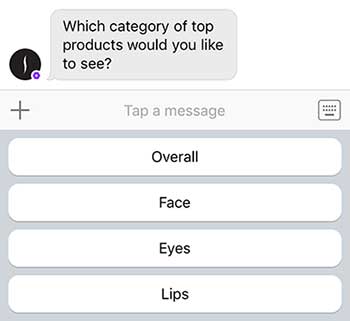What is the Conversational Interface?
- Transfer

So what exactly is a Conversational interface? This is a user interface (UI) that mimics or copies a normal person-to-person conversation. And you probably already have experience with CUI (Conversational User Interface).
If you have a smartphone, then you can chat with virtual assistants such as Siri, Cortana, Alexa or Google Assistant. If you made online purchases, then you could also interact with a CUI called a bot. The bot can help you order pizza, call a taxi or buy a plane ticket.
All these services were designed in the likeness of a normal conversation. CU interfaces are designed to facilitate greater personalization between services and users of these services. They also help improve the user experience by having an integrated customer service for digital products or services.
Companies such as Google, Facebook, Amazon and Apple look at CUI as the next step in future user communications.
Bots using this type of interface can soon replace applications, giving users the opportunity to interact directly with their favorite services.
An understanding of conversational user interfaces (CUIs) is essential for understanding future technological development.
The main idea of conversational design is to make human-computer communication as easy as possible. Computers are basically binary, as we know.
Until recently, it was difficult for them to cope with complex tasks without detailed elaboration of the process, binary encoded instructions on what to do and how.
But with the advent of self-learning technology, computers themselves can evolve and change.
Instead of using a special language for the computer, CUI allows the user to "speak" to the computer the way he would communicate with a person.
Why "talk" if you can "show"?
In the last twenty years, the main focus in UI design has been on the GUI - Graphical User Interface.
In the days of home desktops, hovering the mouse over an object and clicking on an object were the main modes of interaction between the user and services.
But now, most users no longer use desktop computers to access the Internet or to use various services.
The increase in the number of smartphones heralded massive innovations in UI design, with which designers compete with each other, trying to capture the user's attention. As a result, the majority of users use only a few applications. Designers must make a lot of efforts to attract a new audience.
CUI began to dominate this field for one simple reason - it involves a lot more in the user process than a static graphical interface.
By interacting directly with the user, the conversational interface arouses interest and involvement. A large number of conversational interfaces can also anticipate user desires. They appear to be rather quick-witted and users begin to gravitate towards them.
The Importance of CUI The
UI's goal has always been to make user-friendly technology more accessible, intuitive and easy.
A website, for example, uses a large number of different components to make interaction with you, as a user, easier and more convenient. Everything plays a role here - from the color coding of buttons, menu design to the organization of site pages.
Creating a good UI is the same as creating something else - it is an art that constantly requires possession of a lot of skills and constant checks and tests in order to do something great.
But the design method using CUI is actually new and quite complex.
Bots are less complex than humans, but even the most advanced of them are sometimes mistaken when interacting with human language. Even search engines related to the simplest CUIs often provide fairly unpredictable answers.
However, much can change with the development of technology. Facebook is working hard to create Natural Language Processing so that bots can better understand natural language. Google is creating a standard for CUI design.
And many people (including possibly you) create their own bots, thereby increasing the penetration of CUI there.
The future of
CUI conversational design and bots are now in the same state as the "early" web. The potential is huge, although so far limited by real implementations. The Conversational interface has already taken over the minds of the world's leading programmers and designers.
Some of them see the goal of CUI in creating an AI capable of conducting conversation as a person.
Chatbots like Mitsuku (who won the Loebner Prize for their ability to talk as a person) were created with emphasis on authenticity of communication.
The creator, Steve Worswick, told the Wall Street Journal that he was impressed with emails from bot users.
“People write to me how Mitsuku helped them with advice in difficult situations - bullying in schools, dates, job searches, etc. "I also receive many letters from older people who brighten up their leisure time in communication with the bot."
Others, such as the creator of the messenger Kik CEO Ted Livingston, believe that the conversational interface should not focus on imitating traditional conversations, but directly on the UX.
“People are still experimenting with how bots should work, how the interface should look, design, etc. And it seems to me a big mistake to focus on natural language processing. That is why we use recommended answers. Now people quickly understand what they need, having a detailed guide, but with interactive elements. ”

From the point of view of the designer, CUI will become more functional and more efficient. Soon, the difference between the UI and the CUI will be imperceptible.
If all technological trends remain, then the future of the UI is the Conversational User Interface.
